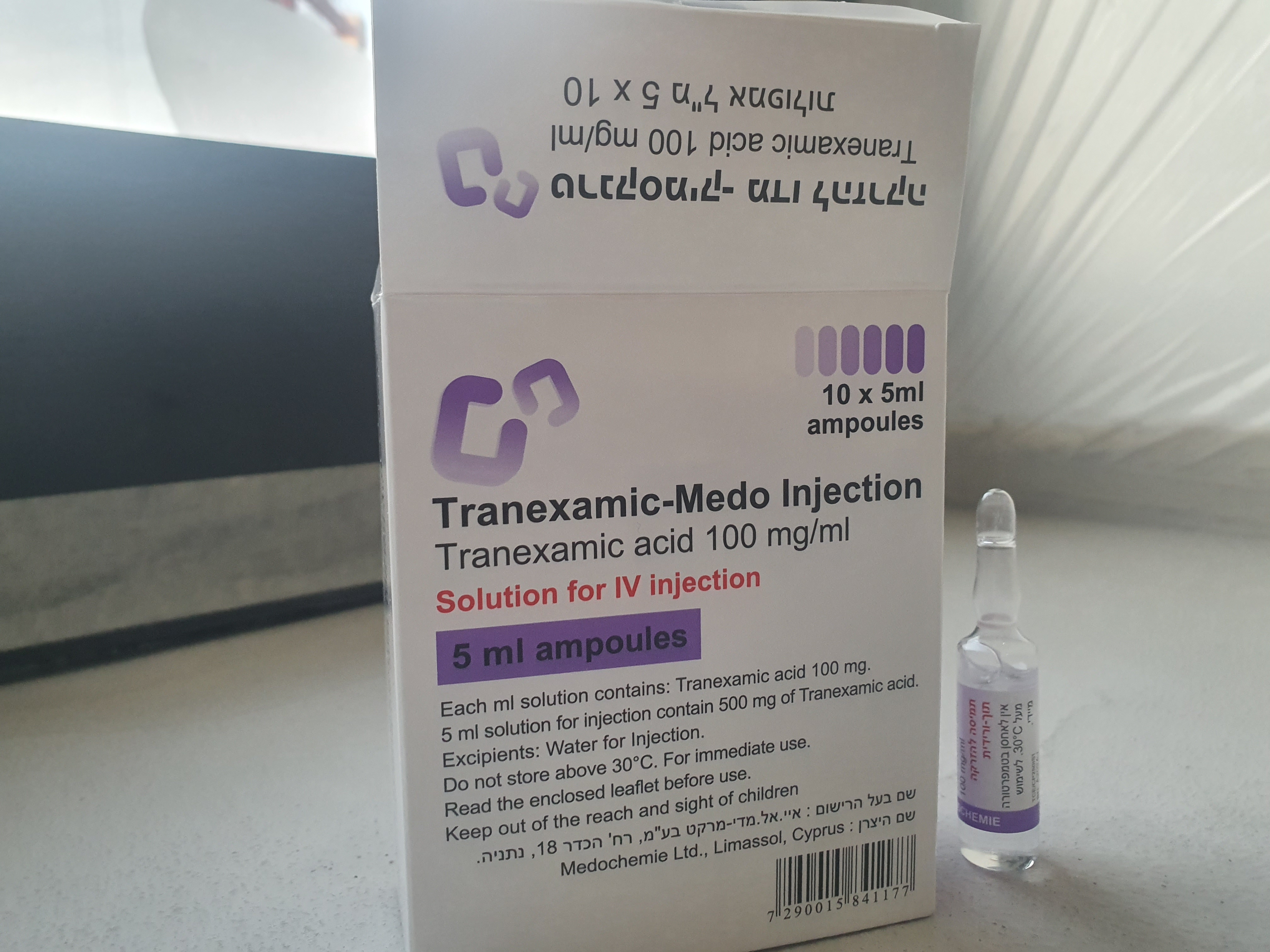Quest for the right Drug

טרנקסמיק-מדו להזרקה TRANEXAMIC - MEDO INJECTION (TRANEXAMIC ACID)
תרופה במרשם
תרופה בסל
נרקוטיקה
ציטוטוקסיקה
צורת מתן:
תוך-ורידי : I.V
צורת מינון:
תמיסה להזרקה : SOLUTION FOR INJECTION
עלון לרופא
מינוניםPosology התוויות
Indications תופעות לוואי
Adverse reactions התוויות נגד
Contraindications אינטראקציות
Interactions מינון יתר
Overdose הריון/הנקה
Pregnancy & Lactation אוכלוסיות מיוחדות
Special populations תכונות פרמקולוגיות
Pharmacological properties מידע רוקחי
Pharmaceutical particulars אזהרת שימוש
Special Warning עלון לרופא
Physicians Leaflet
Special Warning : אזהרת שימוש
4.4. Special warnings and precautions for use The indications and method of administration indicated above should be followed strictly: • Intravenous injections should be given very slowly • Tranexamic acid should not be administered by the intramuscular route. Convulsions Cases of convulsions have been reported in association with tranexamic acid treatment. In coronary artery bypass graft surgery, most of these cases were reported following intravenous (i.v.) injection of tranexamic acid in high doses. With the use of the recommended lower doses of tranexamic acid, the incidence of post-operative seizures was the same as that in untreated patients. Visual disturbances Attention should be paid to possible visual disturbances including visual impairment, vision blurred, impaired color vision and if necessary the treatment should be discontinued. With continuous long-term use of tranexamic acid solution for injection, regular ophthalmologic examinations (eye examinations including visual acuity, color vision, fundus, visual field etc.) are indicated. With pathological ophthalmic changes, particularly with diseases of the retina, the physician must decide after consulting a specialist on the necessity for the long- term use of tranexamic acid solution for injection in each individual case. Haematuria In case of haematuria from the upper urinary tract, there is a risk for urethral obstruction. Thromboembolic events Before use of tranexamic acid, risk factors of thromboembolic disease should be considered. In patients with a history of thromboembolic diseases or in those with increased incidence of thromboembolic events in their family history (patients with a high risk of thrombophilia), Tranexamic acid solution for injection should only be administered if there is a strong medical indication after consulting a physician experienced in hemostaseology and under strict medical supervision (see section 4.3). Tranexamic acid should be administered with care in patients receiving oral contraceptives because of the increased risk of thrombosis (See section 4.5.). Disseminated intravascular coagulation Patients with disseminated intravascular coagulation (DIC) should in most cases not be treated with tranexamic acid (see section 4.3). If tranexamic acid is given,it must be restricted to those in whom there is predominant activation of the fibrinolytic system with acute severe bleeding. Characteristically, the haematological profile approximates to the following: reduced euglobulin clot lysis time; prolonged prothrombin time; reduced plasma levels of fibrinogen, factors V and VIII, plasminogen fibrinolysin and alpha-2 macroglobulin; normal plasma levels of P and P complex; i.e. factors II (prothrombin), VIII and X; increased plasma levels of fibrinogen degradation products; a normal platelet count. The foregoing presumes that the underlying disease state does not of itself modify the various elements in this profile. In such acute cases a single dose of 1g tranexamic acid is frequently sufficient to control bleeding. Administration of Tranexamic acid in DIC should be considered only when appropriate haematological laboratory facilities and expertise are available.
Effects on Driving

שימוש לפי פנקס קופ''ח כללית 1994
לא צוין
תאריך הכללה מקורי בסל
לא צוין
הגבלות
לא צוין
מידע נוסף
